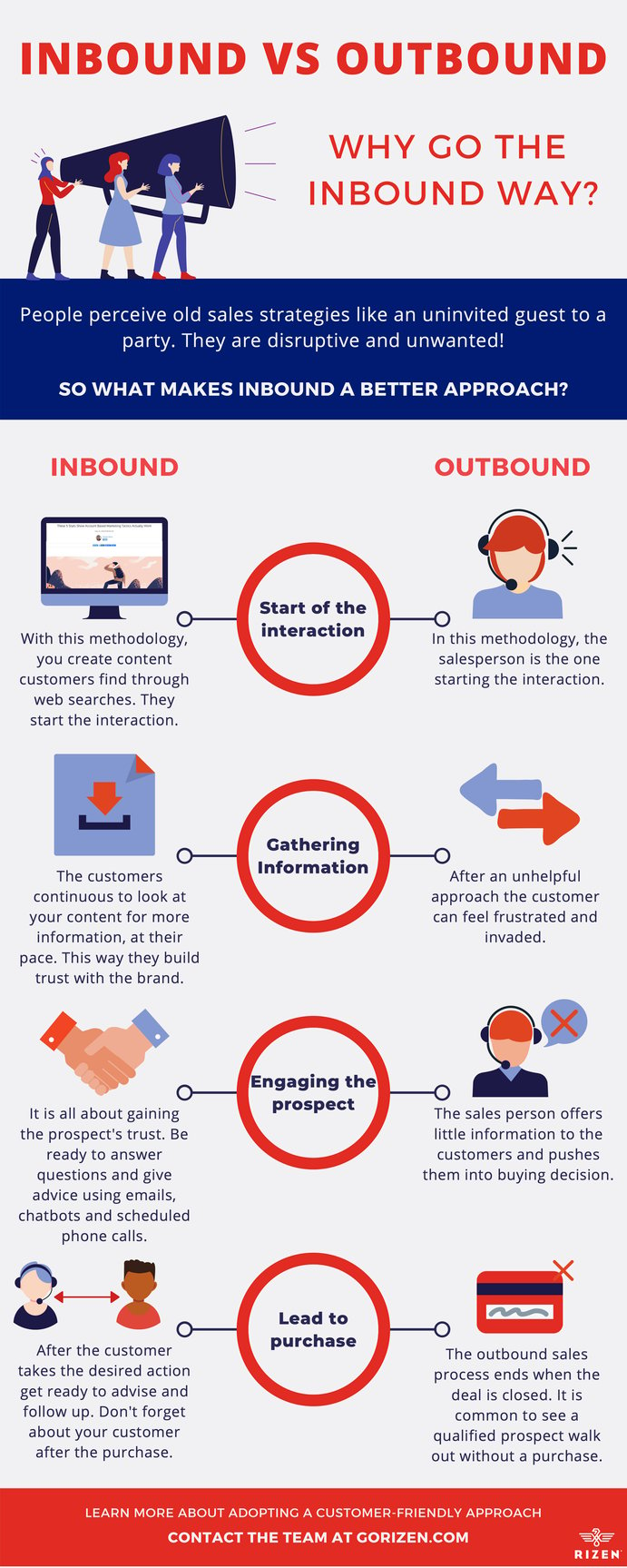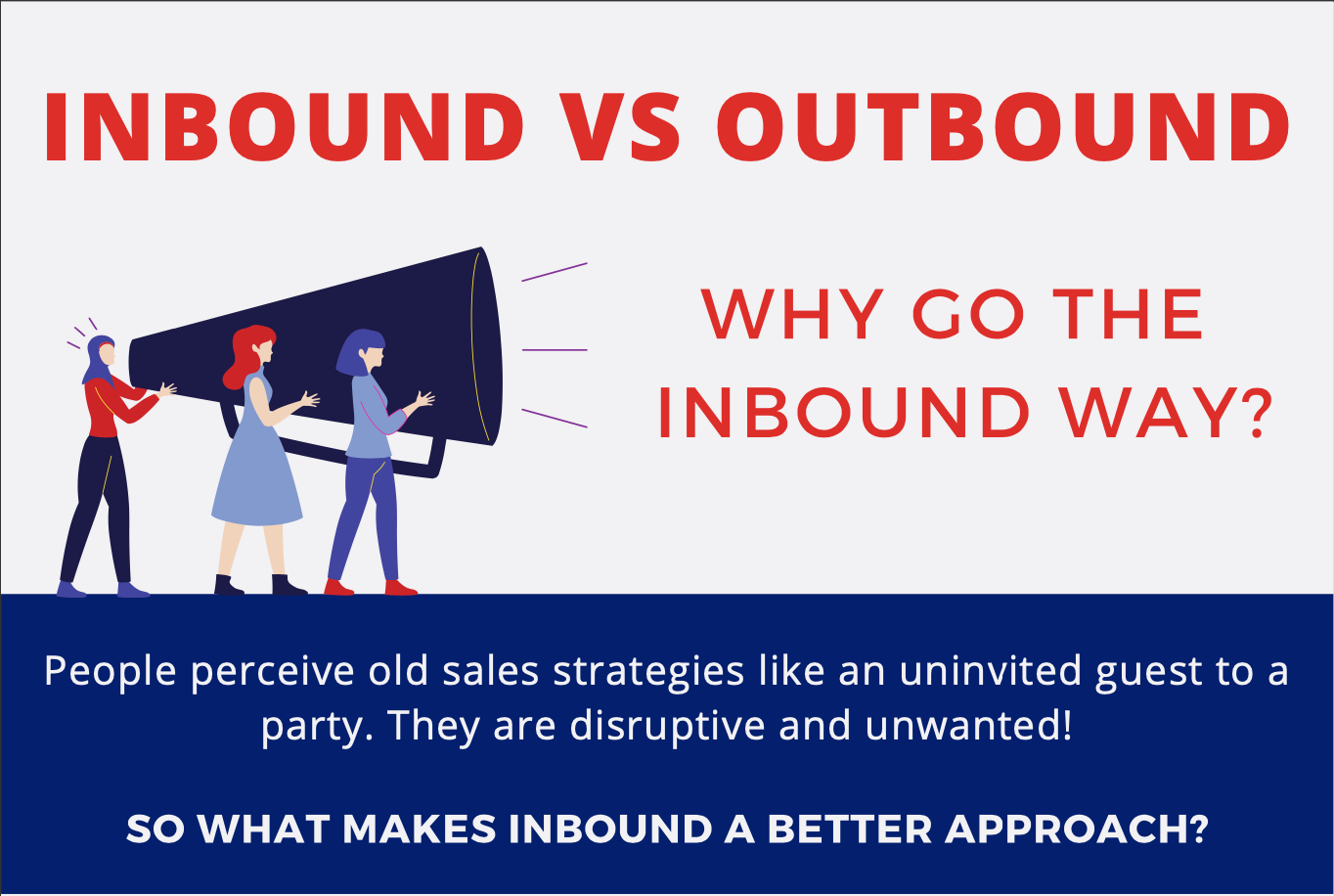No one wants an uninvited guest at a private party. That's how ruthless marketing tactics are perceived. Even if your product is perfect for that person, appearing in their lives at the wrong moment can damage a possible long-term relationship with your brand.
Customers have more power than ever. With the ability to research every brand, yours needs to stand out by adding real value to their lives. That's where inbound comes in.

Check these inbound statistics from the State of Inbound 2018 Global Report. (Hubspot)
- 53% of businesses have seen higher ROI using the inbound methodology.
- 74% of global respondents use inbound.
- 75% of inbound businesses think their strategy is effective. Only 62% of outbound businesses think so.
But why is this? What makes inbound the go-to methodology for marketers and sales around the world? Inbound is about creating relationships on the prospect's terms. This methodology puts long term goals over short term milestones.
See our quick reference infographic below to understand the main differences between inbound and outbound sales. For a more in-depth look at how they compare and contrast, keep reading!

What Makes Inbound and Outbound Different?
Although the term inbound has been around for a while, some businesses are still using the outbound way. Let's see what makes one different from the other.
Start of the Interaction
- Inbound. The first stage is the attract phase. Here you create content that connects with your ideal customer. Creating a buyer persona helps you identify your perfect target. The goal is that the prospects find your brand as a helpful source to solve their problem. They start the interaction.
- Outbound. With this methodology, the salesperson is the one starting the interaction. The salesperson uses tactics like phone calls, emails, and advertisements to connect with possible customers.
Gathering Information
- Inbound. The customers continue to look at your content for more information, at their pace. A “call to action” button your site should invite audiences to learn more, book a personal call or subscribe to an email. It’s the perfect opportunity to gather information that will help to build a relationship - on their terms.
- Outbound. After an unhelpful approach the customer can feel frustrated and invaded. Most of the times the product or service the salesperson is offering is not the right fit for the customer.
Engaging the prospect
- Inbound. It is all about gaining the prospect's trust. Be ready to answer questions and give advice using emails, chatbots and scheduled phone calls.
- Outbound. The salesperson offers little information to the customers and pushes them into buying decision. This often leads to an awkward interaction.
Lead to purchase
- Inbound. After the customer takes the desired action get ready to advise and follow up. Don't forget about your customer after the purchase. A survey or a discount for a next purchase makes your customer feel related to the brand.
- Outbound. The outbound sales process ends when the deal is closed. It is common to see a qualified prospect walk out without a purchase.
The markets keep evolving. And evolution comes with change and new challenges for marketing and sales. The added value and the relationship you build with your customer is what is going to make a difference in the decision process.
To be an inbound business, you don't have to dive in head first. Taking steady steps and knowing your target is the way to start. Trial and error will take you to the ideal combination of tactics to achieve your long term business goals and create meaningful relationships with your customers.
But you don't have to do the change by yourself. Here at Rizen, we are all about growth-driven strategies. We help the business reach its goals through the inbound methodology.
If you want to know more about the inbound methodology and inbound sales check our "Ultimate Guide to Increasing The Velocity Of Your Sales".






%20Try%20This%20Now%20-%20LinkedIn%20Sales%20Navigator-1.gif?length=600&name=(Cover)%20Try%20This%20Now%20-%20LinkedIn%20Sales%20Navigator-1.gif)
No Comments Yet
Let us know what you think